
Guest article by Laura Kelly, Yoga Instructor
Meditation teaches us many things. While the world asks us to speed up, meditation teaches us how to slow down. It teaches us to stay calm amongst frantic energy and invites us to slow our movements and consciously feel into our bodies and breath, to become more connected to ourselves and the world around us.
Studies have shown that the benefits of a regular meditation practice are countless. It assists in the reduction of stress levels, encourages better sleep, helps attune mental focus and can aid in the activation of your parasympathetic nervous system, which amongst many things, helps steady those times of high anxiety.
Yet, even with studies extolling the virtues of meditation, many are sceptical of the practice and find myriad reasons as to why the practice isn’t for them. “My mind is too busy”, “I don’t have time”, “It doesn’t work”. Sound familiar? These are just some of the explanations you might tell yourself as to why you don’t meditate.
But with such a wide range of styles and practices to choose from, even the busiest of brains can find and benefit from a meditation practice.
No brain is too busy
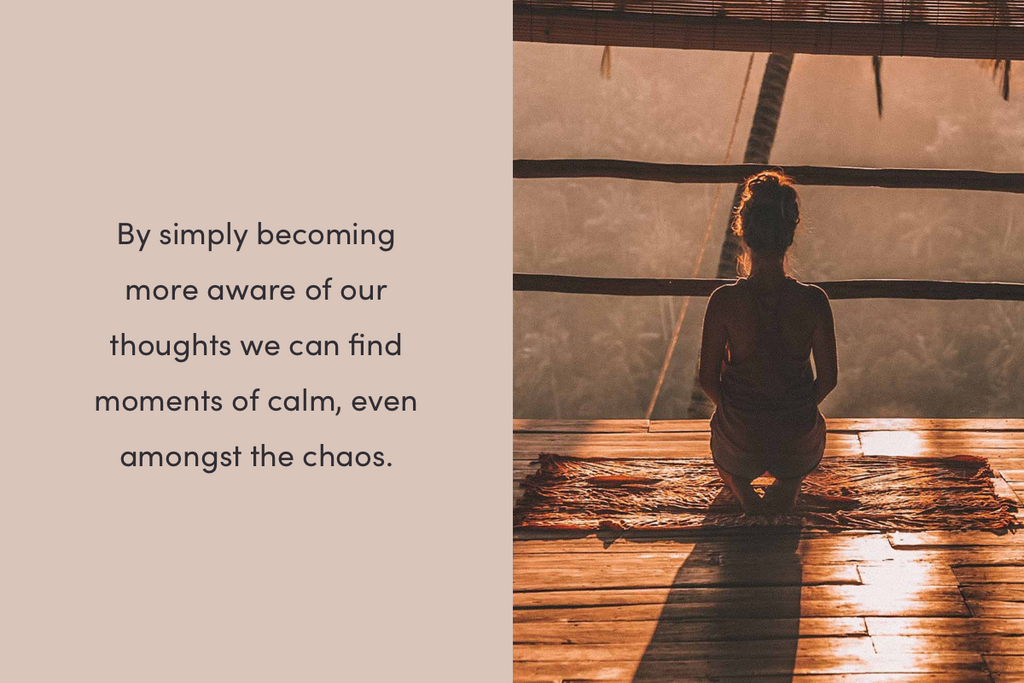
Living in the modern world can get a little hectic from time to time. You may already know that taking some time to yourself is the best thing to do but it’s not always easy. You might find you struggle with a busy mind; it takes practice to be able to find those tiny pockets of space and stillness throughout the day.
But the purpose of meditating isn’t to clear the mind. By simply becoming more aware of our thoughts we can find moments of calm, even amongst the chaos.
It doesn’t all look the same

A dedicated meditation practice can often conjure up images of monks, sitting completely still in an uncomfortable position for hours on end void a single thought entering their mind. But there are so many different types of meditation out there. They won’t all work for you and they don’t all involve sitting upright with your legs crossed and your eyes closed.
A walking meditation is one way to bring yourself into the present moment and settle a busy mind. You might practice meditation with a mantra or by simply focusing your attention on your breath. Explore different styles and see what suits you best.
There is always time
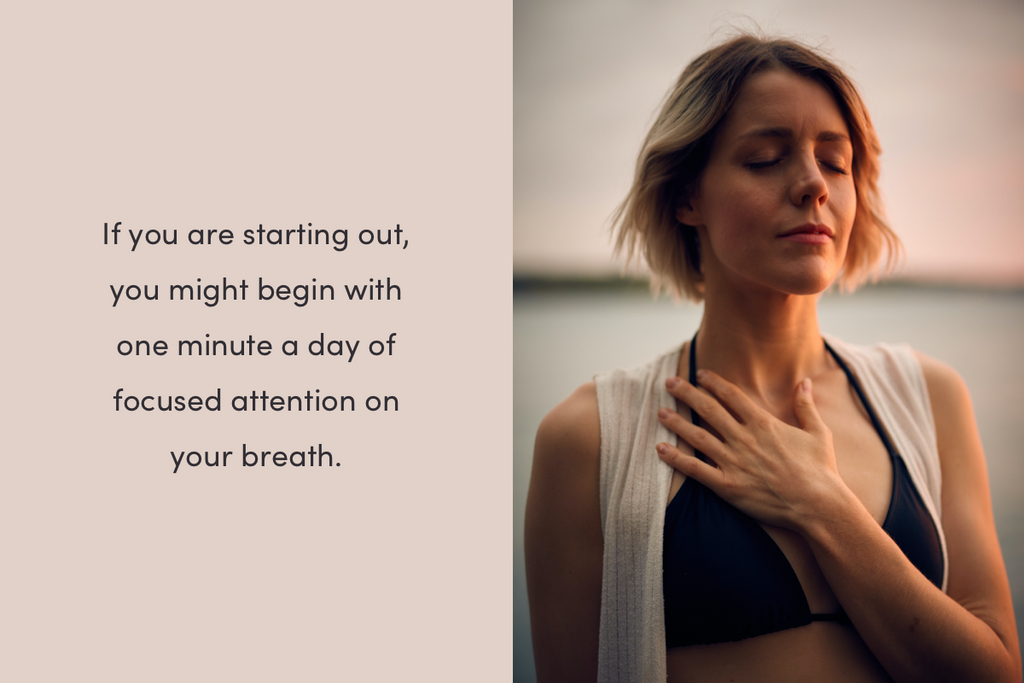
Research has found that as little as ten minutes of meditating a day can be of huge benefit to our health. If you are starting out, you might begin with one minute a day of focused attention on your breath. Increase to two minutes and so on until you reach ten minutes or more a day.
Meditation apps provide useful guided timings whilst even the simplest of smartphones can be used to set a timer. The best time to meditate is often when first waking up. It can also be used as a welcomed break during any time of day or to help you wind down at night.
It doesn’t need to be perfect
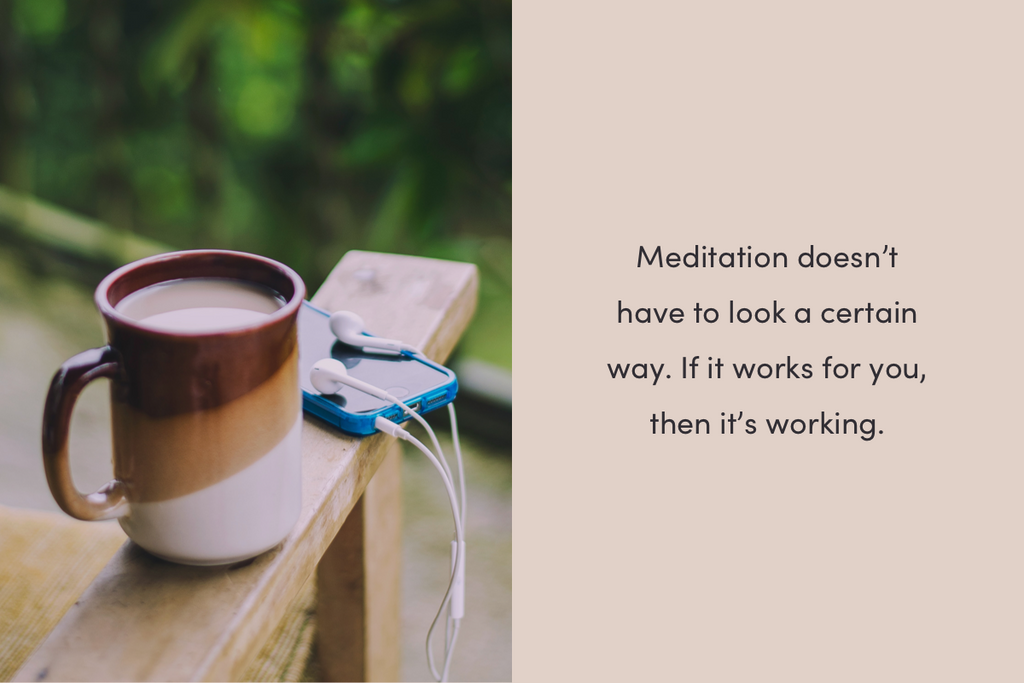
Sarah Owen, a teacher of Yin Yoga and meditation says that your mediation experience is exactly that. It’s YOUR experience. It will be totally different to anyone else in the room and it can be totally different each time. That’s what makes it so amazing.
Don’t become attached to the outcome of a meditation practice, find space to sit in the experience. Meditation doesn’t have to look a certain way. If it works for you, then it’s working.
Meditation resources
Here are a few resources to help support a meditation practice:
Headspace
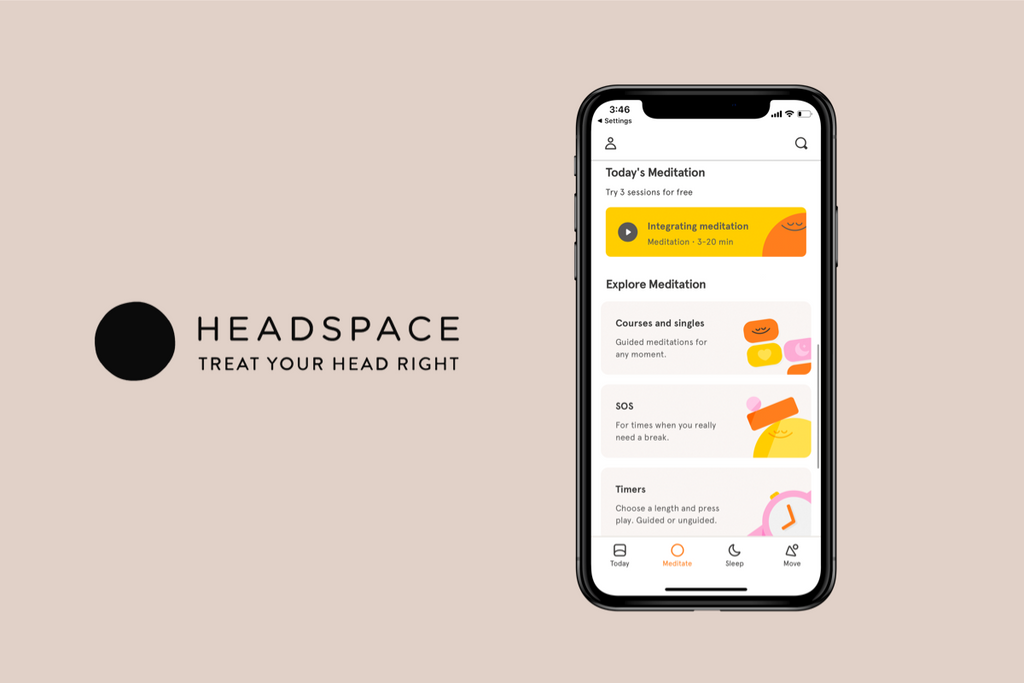
Co-founder Andy Puddicombe launched this guided meditation app in 2010. Headspace offers a range of courses including ten-part Meditation Basics available for free which is a great place to start. Their guided sessions range from three-minute breathing exercises to longer courses on specific areas of focus. They also have sleep sounds and guided meditations to help lull you into a restful night’s sleep.
Calm

This guided sleep and meditation app offers a full range of listening options. Calm have wonderful sleep stories, some of which are read by famous voices such as Stephen Fry with a relaxing tale about lavender fields in the south of France. They also offer meditation courses focusing on calming anxiety, worry, spreading kindness and other areas. They also have peaceful and relaxing musical tracks to choose from.
Insight Timer
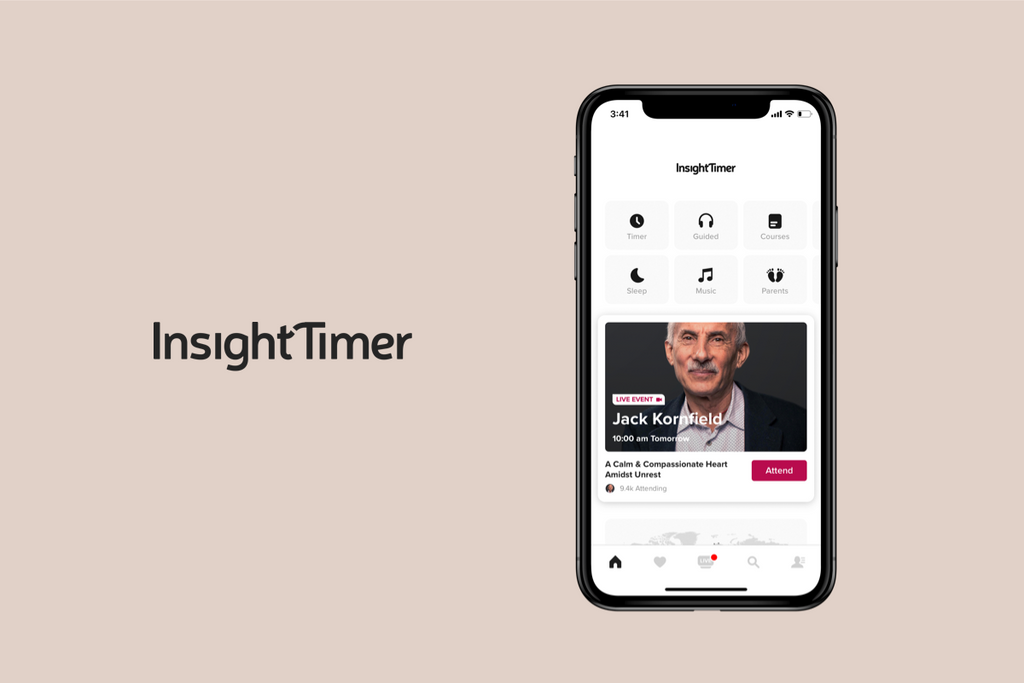
Home to meditation teachers from all over the world, this meditation app has 45,000 free meditations available. You’ll find specific courses in the Insight Timer Members Plus section but their free offerings include guided recordings for; learning to meditate, coping with anxiety or managing stress, mindfulness in the workplace, boosting your self-esteem and so much more.
Nimbus & Co
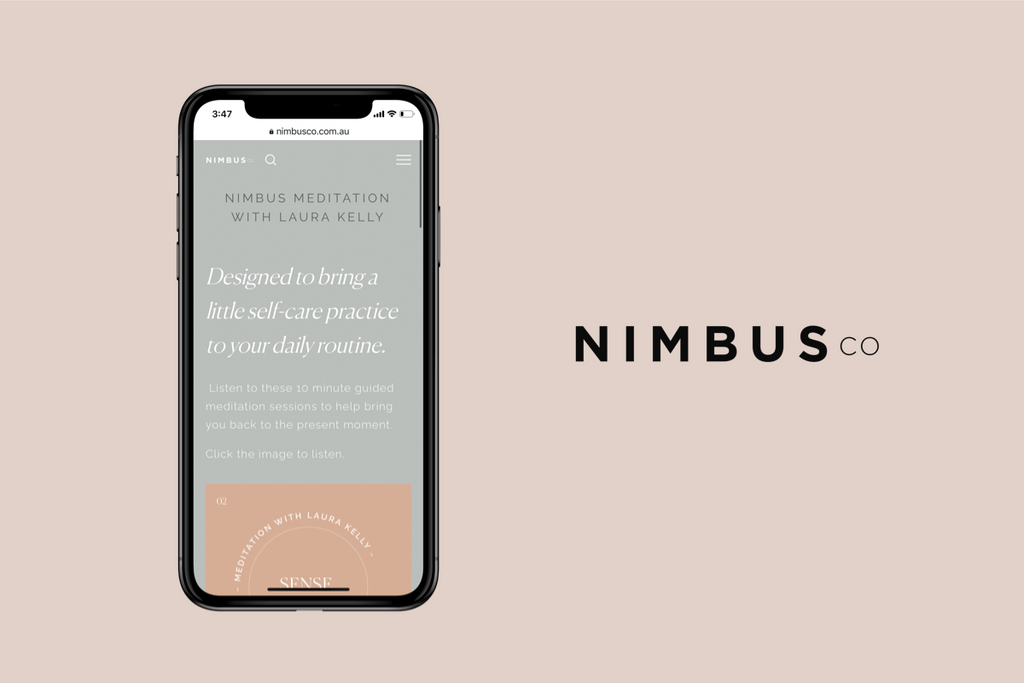
The team at this Bondi-based studio launched a meditation series to support their community whilst they were closed due to the COVID-19 restrictions. You can listen to these guided meditations by Nimbus & Co for free here.
You may also like

Lifestyle
Boody x Charlie Evans
Last week, in celebration of our New Nude collection, we hosted a 'nude' art class with @_artbycharlie. Charlie led the class, discussing abstract figurative techniques and started with a drawing exercise, focusing on the lines of the body, shapes, movement, negative and positive space, placing and composition. Our models were in the nude - Boody nudes. They each showcased the new colours and were the drawing focus of the class. Depending on your skin tone, everyone's version of nude is different. We believe that every line, fold, curve, shape, and colour that makes you you is something to celebrate. Our class was inspired by nude being a state of being, not a colour. Discover our collaboration below with images of the day. Shop nudes.

Lifestyle
Turn Your Inner Critic Into Your Inner Guide
It’s that voice that says… “No, you can’t do that” “You’re not as good as him/her” “You can’t succeed in achieving your dream” This is the voice of your inner critic. By better understanding the inner critic we can turn this little voice and critical narration in your mind into a positive force, helping us clear the obstacles we face so we can achieve our goals and create the life of our dreams. Why we have an inner critic The inner critic is part of our comfort zone. An ancient survival system, consisting of instinct, intuition and fear. That little voice that wants to warn you or remind you not to change is designed to keep us alive and safe. In our modern lives, the inner critic and comfort zone has become too restrictive and unsupportive of our dreams and goals. By always staying inside your comfort zone you may be blocking yourself from truly believing in yourself and thus never really reaching your potential in life. When we are tucked away safely in our comfort zone, we can see challenges as something to avoid, rather than a chance to learn and grow. We can get caught up thinking about the effort something will take rather than seeing it as worth the work to get where you want to be. Always being inside our comfort zone can feel like you don’t have control, as if you are trapped. Stepping outside of the comfort zone By deciding to step outside of your comfort zone, you invite in more possibilities, opportunities and fulfillment than you could ever dream of. You choose to be inspired by others success and achievements instead of intimidated, jealous and judgemental. You start to use their success, hard work and happiness as motivation to achieve your own! Those people who seem to have it all together, have all the luck or don’t have the same obstacles as you are actually the ones who have fought to step outside of their comfort zone. They continually challenge that inner critic that wants to keep them playing small and safe. And because they step outside their comfort zone and make friends with their inner critic, they are more in control and free. You too can learn to turn your inner critic into your guide and friend. Using your inner critic as a guide What we are most scared to do and is our biggest challenge is sometimes the exact thing we should be doing; Leaving the comfort of your job to start your own business Joining a gym and seeing a nutritionist to get healthier Studying that course you’ve been dreaming about for years Following your passions and hobbies like singing, writing, dancing or art By following the fear we can find our true path and happiness. Listen to that critical voice and challenge what you’ve been telling yourself. Turn “I can’t” into “I’m going to try”. Making friends with the inner critic, turning it into your best friend! Don’t avoid the challenges. They are life’s biggest lessons. Don’t be afraid to fail, use it as a way to learn and improve. No successful or happy person ever gets it right every time, through trial and error and embracing the challenges they became stronger and wiser, improving on their goals and skills, learning how to do better next time. When that voice comes up again, simply say “thank you for your concern and trying to keep me safe, but I want to step out of my comfort zone and grow”. Let the voice know that you are going to try and you would like its support and encouragement. Direct that voice to help support you grow and learn, and before you know it you’ll be smashing your goals and aiming even higher. With that little voice now saying to yourself; “Well done, you deserve it” “Good for them, they have worked hard to achieve their goals” “I am trying my best and I believe in myself” “Life’s challenges and obstacles help me become a better person” “I choose to follow my dreams and step outside of my comfort zone” “I embrace change and developing myself” Guest Author: Fiona Lucas

Lifestyle
5 Steps To A Digital Detox
Guest Author - Fiona Lucas When you’re scrolling through your social media do you feel uplifted, confident, inspired? Or do you feel depressed and unmotivated, comparing your life/body/career to others? If you don’t have a positive relationship with your social media and it’s affecting your wellbeing, it may be time for a digital detox.























